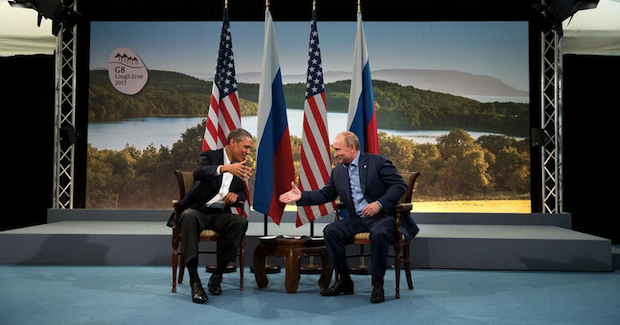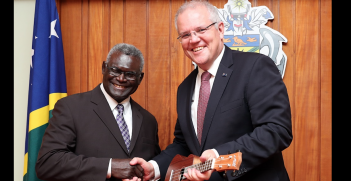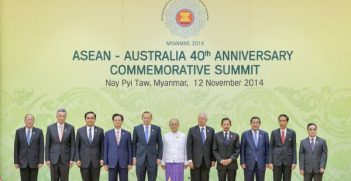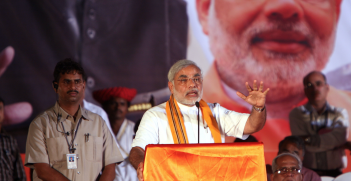US and Russia: A Pacific Reconciliation?

Russia’s Far East is just as susceptible to Chinese power as the countries of the Indo-Pacific and if the country wants to shore up control over this region, repairing relations with the US will be essential. It is also in America’s interest to have Russia as an independent power in Asia rather than being China’s satellite. However, US-Russian relations have reached levels of mutual hostility and mistrust not seen since the Cold War and it will take a lot to put them back on course.
Russia’s acquisition of its Far East territory, a legacy of tsarist Russia’s eastward expansion in the 19th century, remains a controversial subtext of the Russia-China relationship. Many Chinese still view the treaties ceding the land to Russia as unequal and illegitimate. The treaties are therefore an issue that can be mobilised by Chinese nationalism.
China is now apparently seeking to recover its lost territories, though with no official policy or timetable for achieving this goal. The recovery scenario does not involve military force or planting the flag, but rather a process of gradual economic assimilation that links Russian Far East (RFE) development to Chinese industrial requirements and preferences. Though China has long coveted the RFE’s vast resources and logistical assets, its opportunities for geo-economic expansion into these valuable lands have greatly increased in the wake of events external to Asia—the ongoing crisis in Ukraine and ensuing Western sanctions against Russia.
Increasing presence
Facing declining growth and ruptured ties with the West, Russia is lifting informal restrictions on Chinese investment in the RFE and eastern Siberia. It is even allowing majority Chinese ownership of strategic hydrocarbon deposits and courting Chinese investment for critical infrastructure now languishing from lack of funds. At least 50 new intergovernmental and government-sponsored agreements have been signed for these regions, covering energy, mining, transportation and finance.
China’s evident developing interest in and penetration of the RFE combines economic and strategic perspectives. Beijing may see the RFE as a nearby overland supplier of vital raw materials that could serve as insurance against possible maritime interdiction of such products by its Asia-Pacific arch-rival, the US. The RFE also figures in a long-term geopolitical game plan for building influence along China’s continental periphery.
Beijing in theory needs a secure and peaceful northern border in order to concentrate military planning on the Western Pacific—the theatre of primary importance in its contest with the United States. China’s preferential access to the territory and resources of eastern Russia could eventually be followed by a rising measure of political control. In essence, China’s aim might be to convert the RFE into a sort of Outer Manchuria, a territory where Russia’s real sovereignty is becoming increasingly tenuous, and where development policy is decided in Beijing or Harbin rather than Moscow or Vladivostok.
With the RFE locked in China’s tightening embrace, and deeply dependent on Chinese financial largesse, Moscow would be inclined to adjust its Asian policies to China’s core interests—in effect to act as China’s junior partner on region-wide concerns. With Russia at its back, Beijing could pursue its Asian agenda more aggressively, as its recent behaviour in the South China Sea demonstrates.
Closer ties
A possibility exists that China and Russia could form a quasi-alliance or even an informal military entente, especially if the West persists in its policy of isolating Russia economically. Recent joint Sino-Russian naval maneuvers in the contested South China Sea could presage a new and malevolent tendency in the relationship.
But is Sino-Russian entente a necessary and natural end state of Asia-Pacific power arrangements? Some factors might point to a different conclusion. In this connection, we would like to offer an alternative vision of Russia’s potential role in Asia, including the prospects of a Pacific rapprochement with the US on mutual policy concerns.
The two nations, close neighbours across the Bering Strait, have few outstanding differences in the Asia-Pacific and share an objective stake in a stable regional order in east and northeast Asia. Despite a host of disagreements on other issues—Ukraine, Syria, liberal democracy etc.—Russia could be helpful to US objectives in Asia. Not as a US ally but as an independent pole in regional affairs; a balancing force against Chinese ambitions and even perhaps as an intermediary for the resolution of trouble spots, such as the South China Sea and the Korean peninsula.
Moscow-Washington manoeuvres
Realising this vision would require a sea change in the attitudes of Moscow and Washington—starting with an understanding of their common security responsibilities in the shared Pacific space. But the road to revitalising relations would have to begin with tangible steps toward re-establishing commercial ties with Russia, and partnering with it to solve the country’s most egregious economic problems.
Among other things, such steps could diminish China’s leverage as benefactor of last resort, and allow Russia a broader range of international partners in developing its vital eastern territories. Normalisation wouldn’t make Russia a US coalition partner or erase its new China ties, but could bring Russia into a more equidistant position vis-à-vis China and the US—certainly preferable to the skewed triangular relationship that exists now.
Normalisation, of course, won’t happen overnight. At a minimum, it will require some agreed-upon formula for settling the festering Ukraine conflict, the initial source of the sanctions against Russia. A prerequisite for a solution would be fuller appreciation by Moscow and Washington of the costs of the conflict for their respective interests in Asia.
For Washington, that would be Russia’s continuing drift to China and new security complications arising from a potential Sino-Russian alliance. For Russia it would mean subservience to China’s regional agenda, a greatly diminished voice in Asian affairs and perhaps even a loss of its core identity as a Eurasian power. Vladimir Putin’s courtship of China and incessant touting of the “truly exemplary collaboration” cannot disguise the very real risks to the Russian state, at least in its Asian manifestations.
Whether wisdom will prevail in both capitals and guide the actions of policymakers remains to be seen. US-Russian relations have reached levels of mutual hostility and mistrust not seen since the Cold War and it will take a lot to put them back on course.
This article was originally submitted in response to the Australian Outlook review of Dr Rensselaer Lee’s and Artyom Lukin’s book, Russia’s Far East: New Dynamics in Asia Pacific & Beyond (Lynne Rienner, 2015)
Dr Rensselaer Lee is senior fellow at Foreign Policy Research Institute, a Stanford PhD and he is also president of Global Advisory Services.
Artyom Lukin is associate professor at the School of Regional and International Studies at Far Eastern Federal University in Vladivostok. He is one of Russia’s leading experts on Asia-Pacific geopolitical issues.
This article is published under a Creative Commons Licence and may be republished with attribution.





